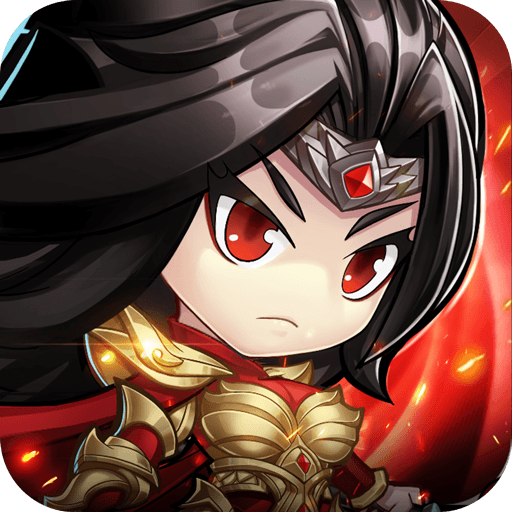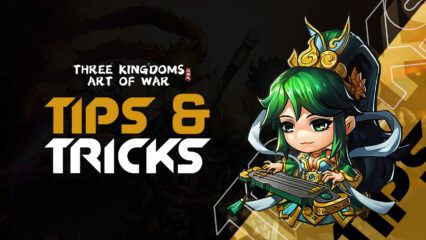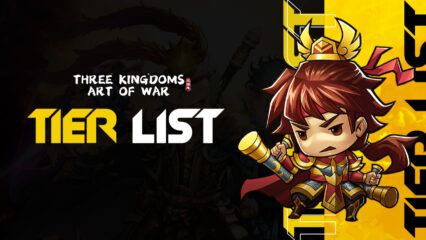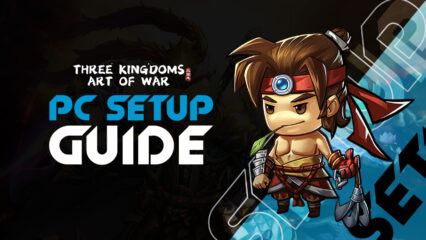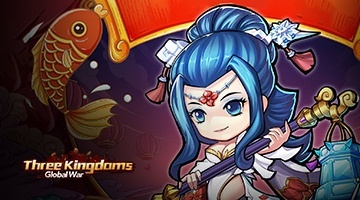Three Kingdoms: Art of War - A Guide to Teambuilding
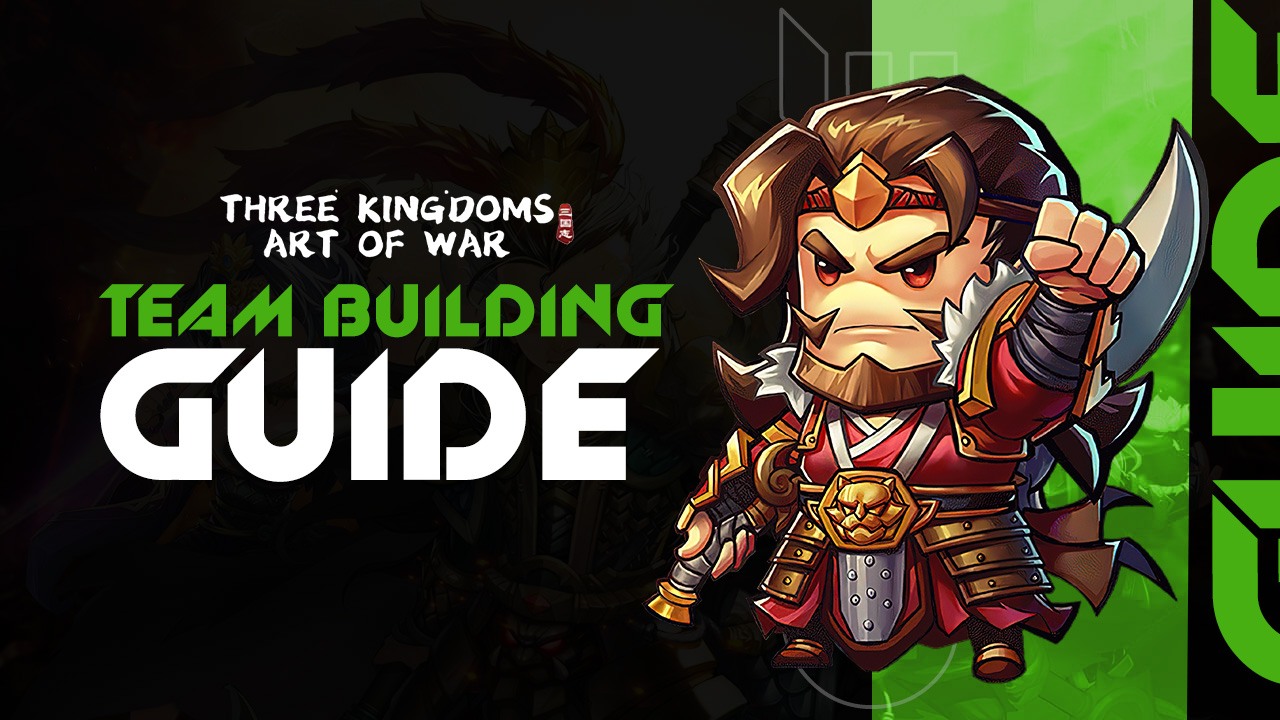
Many play Three Kingdoms: Art of War to assemble the most powerful squad of heroes that can take on all their enemies, no matter how strong they might prove to be. However, it’s hard to understand what makes the team good in this game if you’re unfamiliar with the different gameplay mechanics that affect the combat system. In this teambuilding guide, we’ll be talking about some of the most important tips to help new players understand how to form the best team of heroes.
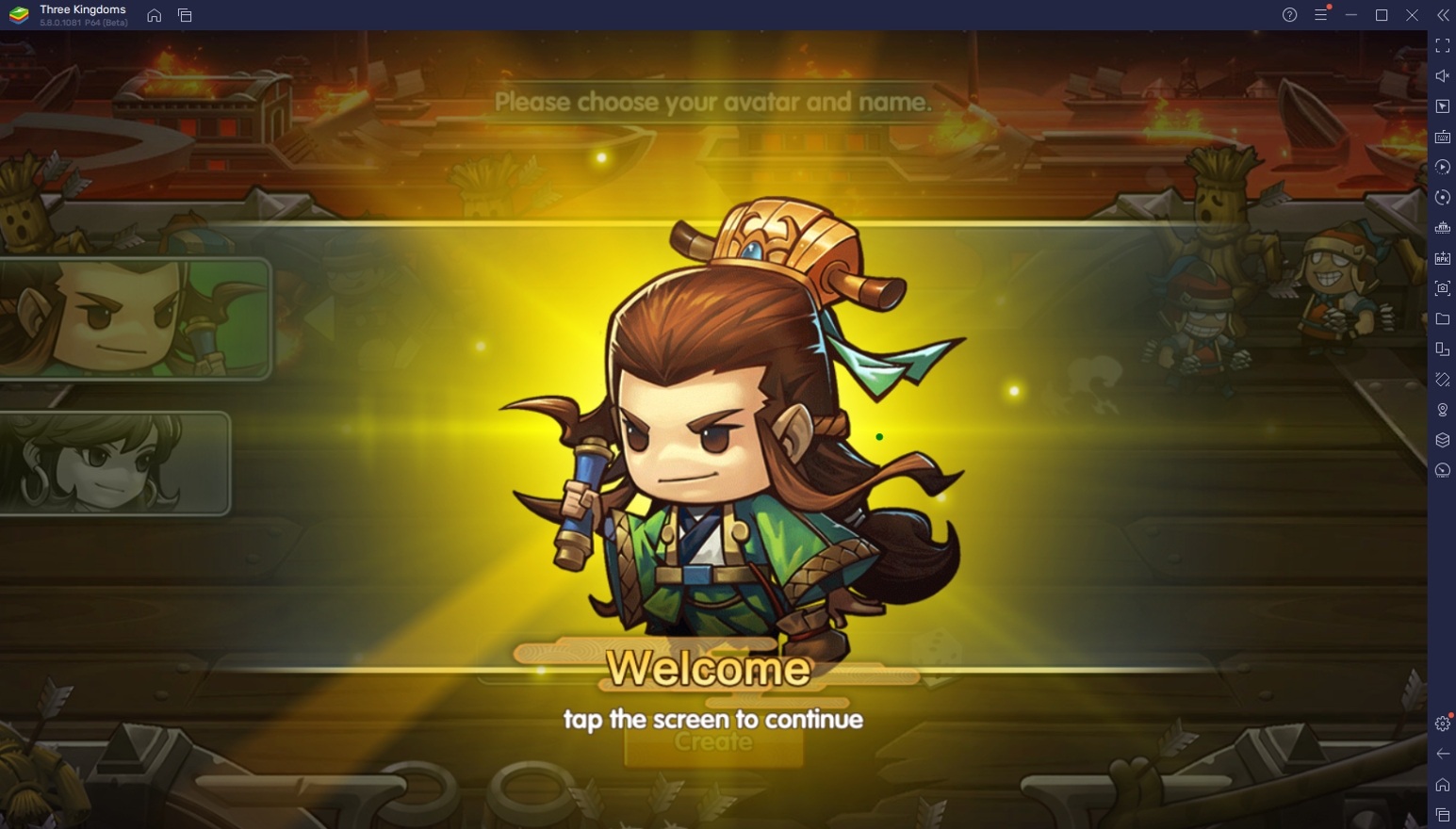
Building a team begins with understanding the game, in general. We’ve prepared a Beginner’s Guide to help players understand the basics, including the fundamentals surrounding heroes in Three Kingdoms: Art of War. These are all important when discussing teambuilding as they act as the foundation of the mechanics we’ll be talking about in this article. Once you’ve read up on that, you’re ready to learn more about what makes a team good by learning the different components of teambuilding.
Roles & Classes
The first thing that players need to know about is hero roles and classes. Each hero has a specific role in the team, depending on their class. The game has five types of heroes: tanks, supports, mages, assassins, and fighters. Knowing the class of your heroes is important because players generally want to balance the number of heroes they have from each class depending on what their focus is once the combat begins. There are different ways to approach a fight, but balancing your team is the first step to making sure you’re successful.
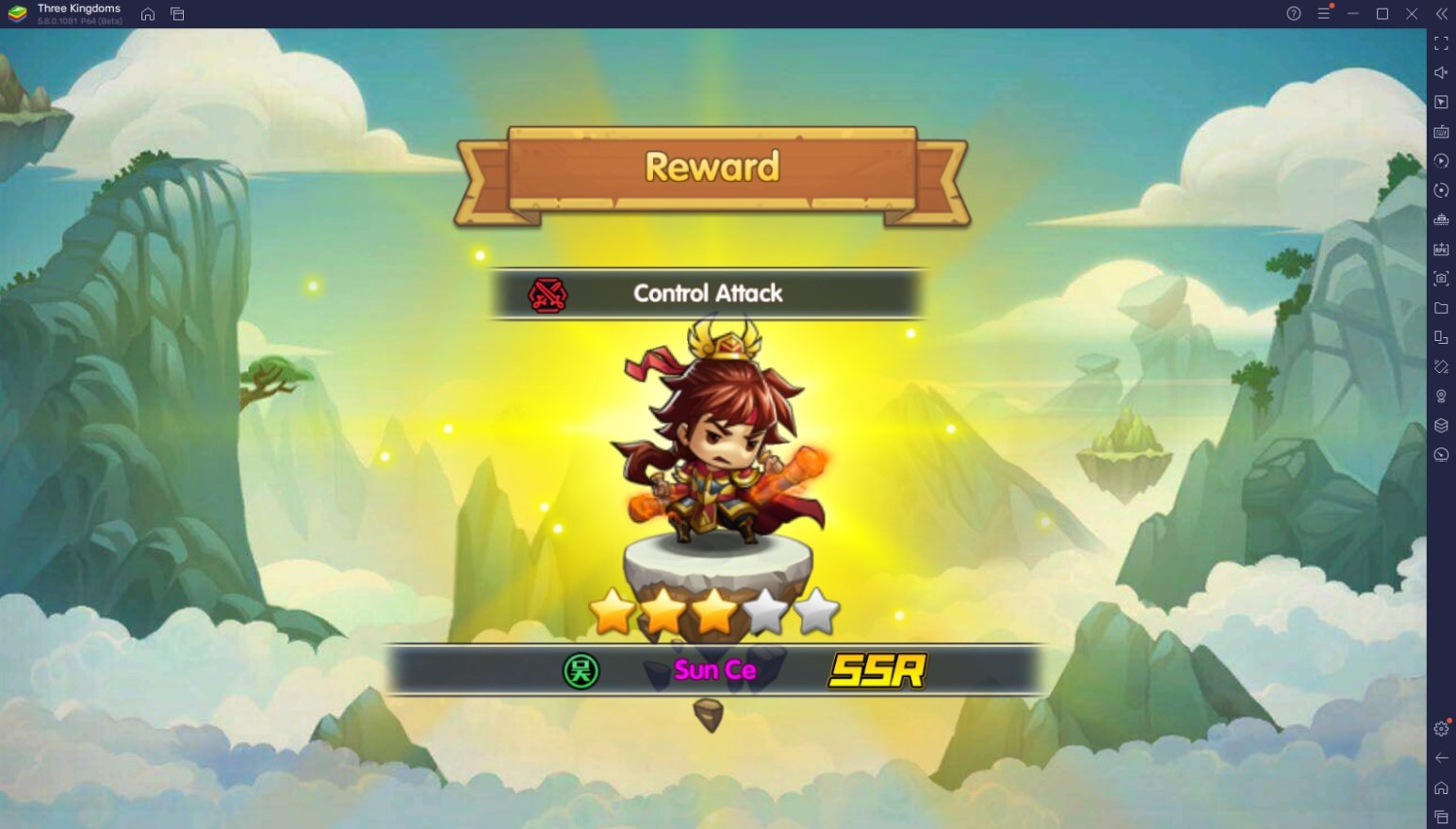
The tank heroes are defense-heavy units with very little power and are needed to soak damage in the frontline to help your other heroes survive longer. The support class gives out buffs and heals their ally in the battle to increase their combat efficiency. Mages and assassins do high amounts of damage but generally die really quickly. The fighter class has a good balance of defense and offense and is great to place in the frontline as a secondary line of defense for your team.
Squad Formation
Your squad’s formation also plays a vital job when trying to increase your team’s efficiency in battle. We’ve already talked about the roles and classes so you may already have a general idea of where to place your heroes when building your team. For example, tanks and fighters belong at the frontline to soak up the damage while supports and mages should be placed directly behind a defensive hero so that they don’t instantly die, making you lose your main damage source early on in a fight.
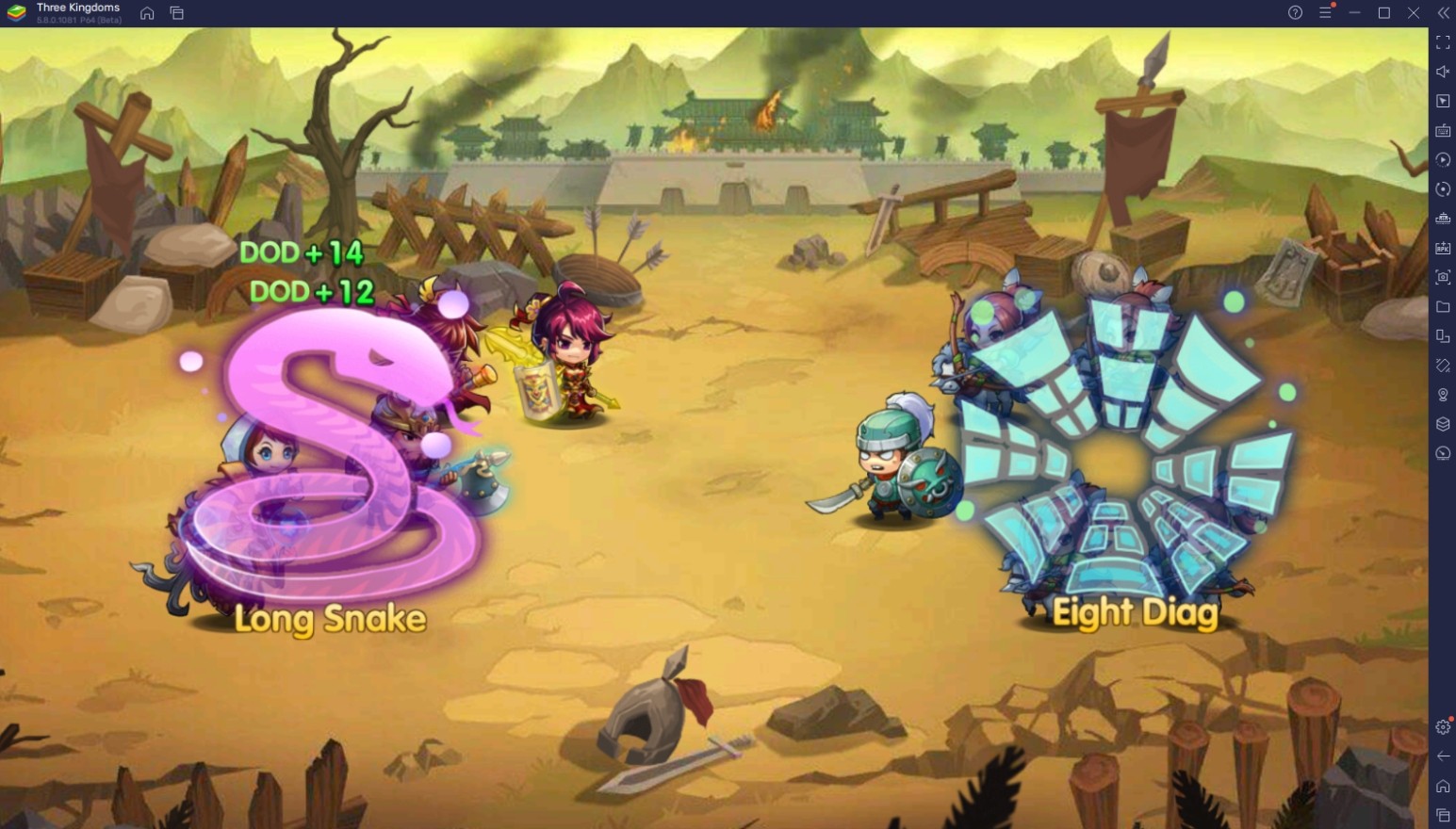
Aside from their placements, Three Kingdoms: Art of War also has passive bonuses depending on hero formations as a whole. For example, assembling your heroes in the S-shape will give your team the Long Snake bonus which provides a bonus in dodge chance. This specific formation is very effective if you have a lot of mages and assassins and only have one frontline unit. Discover all the different hero formations and determine which ones work best according to the list of heroes you currently own.
Skills and Abilities
Knowing your heroes’ skills and abilities is very important to building your team. Aside from damage-dealing heroes, you generally don’t want to have two or more heroes with similar abilities together in one team, especially when their bonuses don’t stack with each other. For example, one character with a healing or shielding ability is enough in the team because it might cause your team to lose precious damage output since your team is more focused on surviving damage.
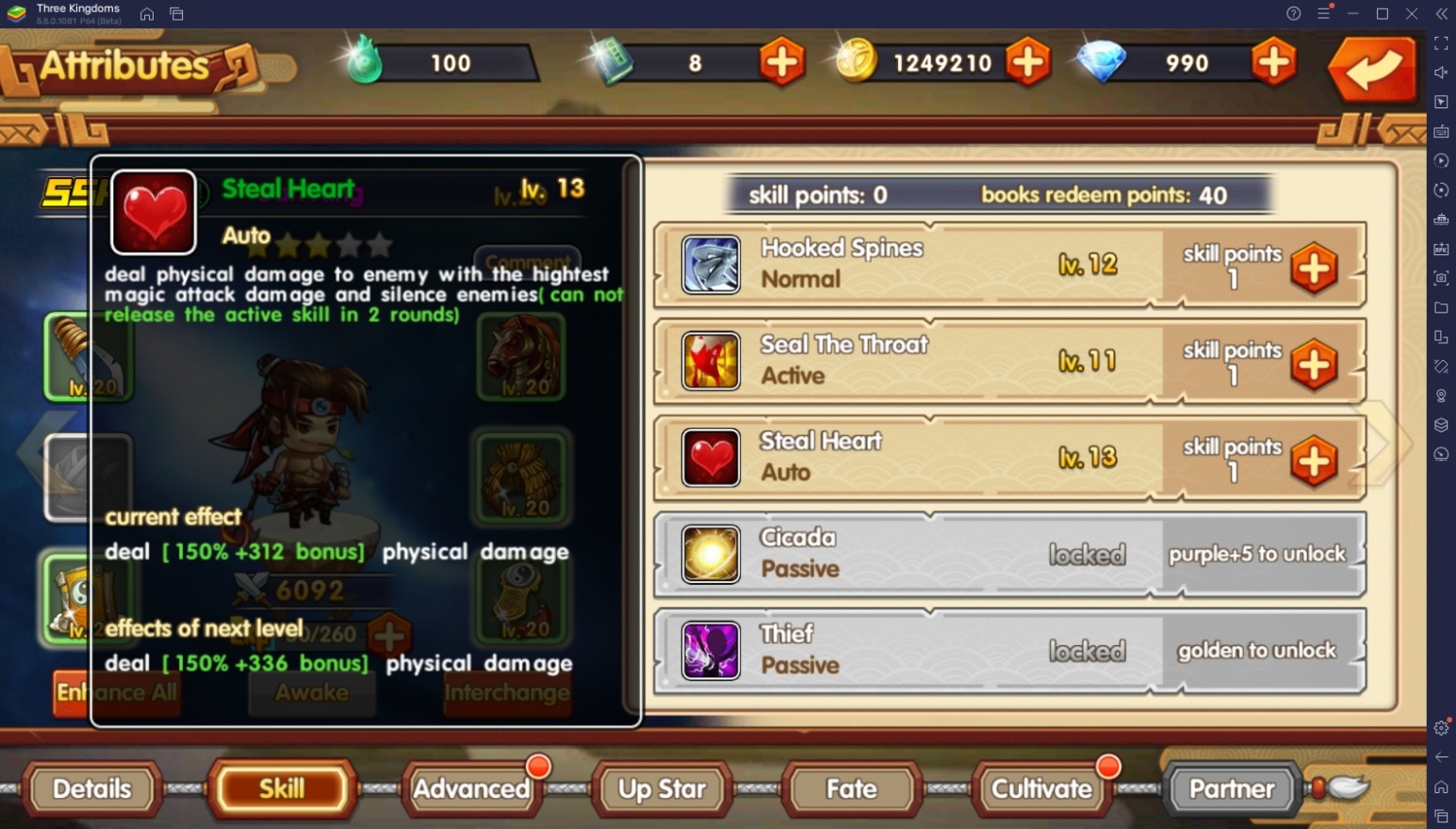
For damage-dealing characters, it’s okay to have similar abilities because there’s no such thing as having “too much DPS” in a team. However, take note of your heroes’ secondary abilities that are included in their skill description because you may notice additional effects that don’t stack. This is an extremely rare case but it does happen sometimes when you have a very diverse set of characters in your collection. For now, it’s more important to read up on your tank and support hero skills.
Battle Equipment
Equipment provides one of the most important elements in building your team which is stats. You can place tank heroes on the frontline but without proper equipment, they won’t be able to do their job properly and your squad will probably just fail. Using proper equipment should be one of your goals as a player so that your team will be able to do their job when fighting against various types of opponents. Luckily, getting equipment in this game is a lot easier as compared to other RPGs.
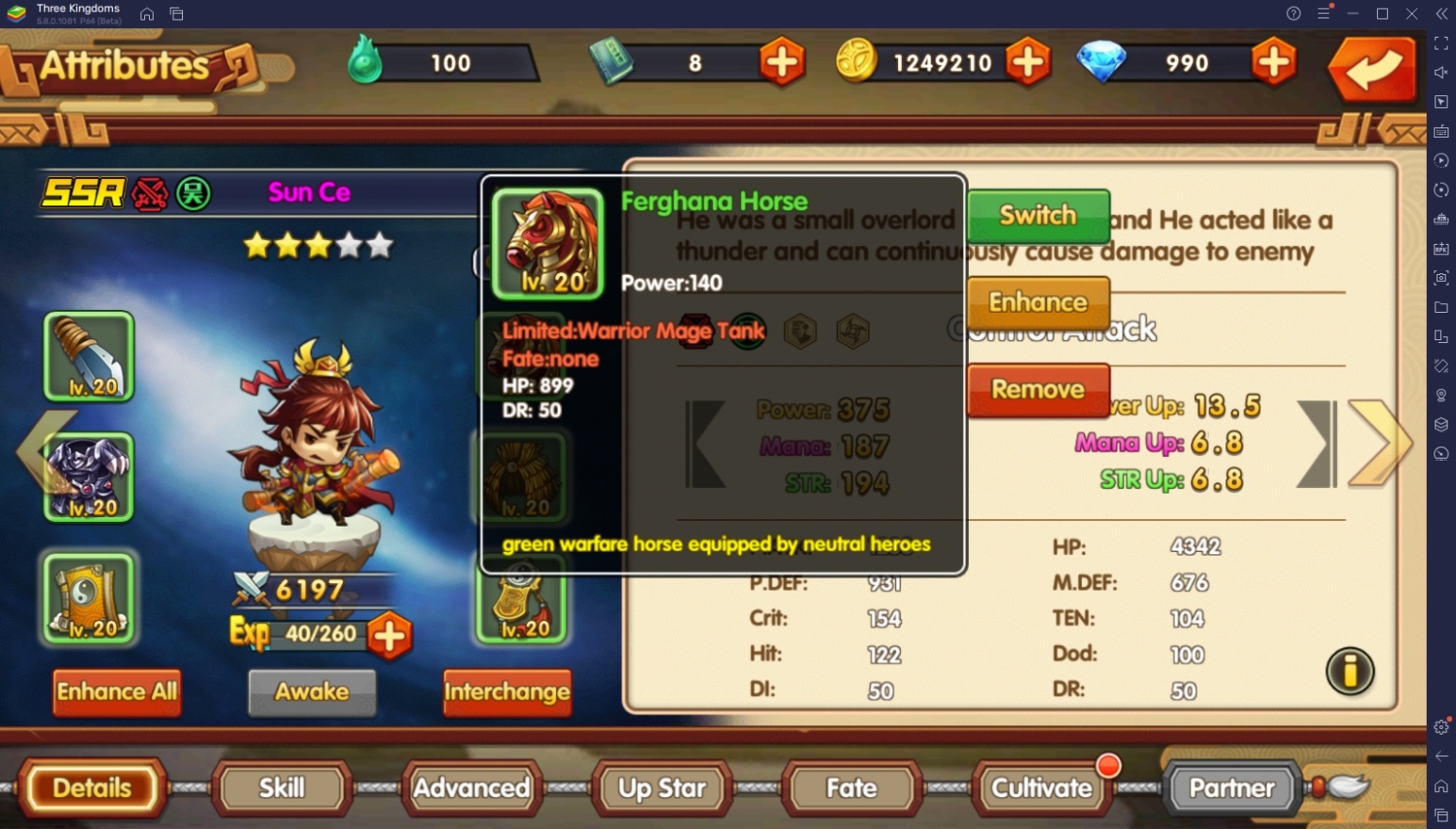
Once you’ve equipped your hero with the equipment of your choice, it’s time to upgrade those items to improve their effectiveness in battle. Players can simply click the Enhance All button to upgrade those items using gold as the resource. Keep in mind that there are different tiers of equipment and players should make it their goal to continue getting better items as they level up. You can farm equipment by finishing different stages in the campaign with higher-level items being available in more difficult stages.
Hero Rarity
Hero rarity is the final factor in choosing which heroes to place on the team in Three Kingdoms: Art of War. While it’s bad practice to simply look at a hero’s rarity as the basis for their strength, we can’t deny the fact that SSR (gold border) heroes simply have the best stats and abilities out of all the different units in the game. While there may be some SR (purple border) heroes whose skills and abilities may prove to be more useful, SSR heroes simply have better stats and are designed to be stronger in this game.
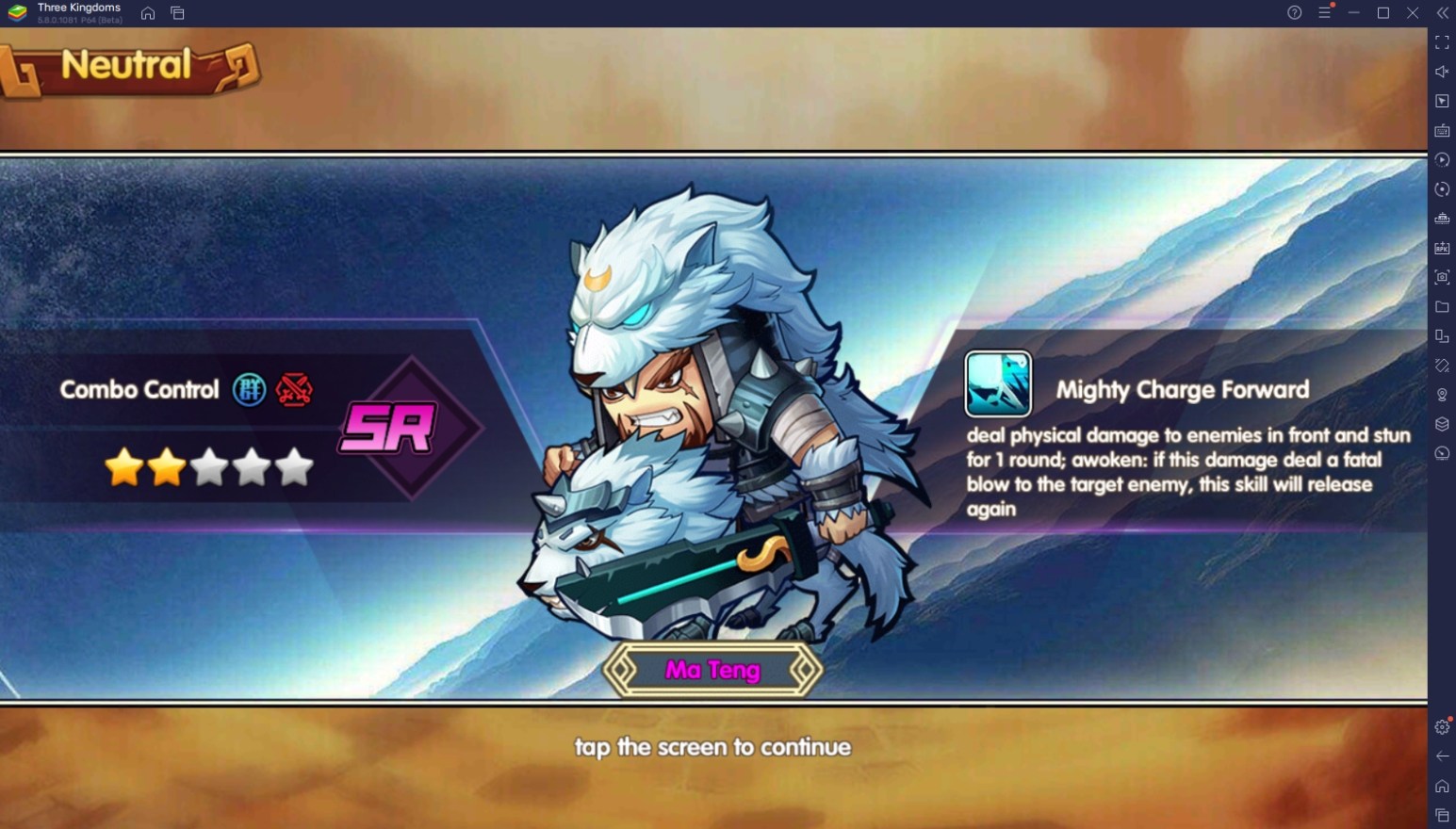
Needless to say, players still need to follow the rules regarding balancing their team based on their heroes’ roles, classes, and skills. If there comes a choice whether you need to pick an SR hero over an SSR hero to place for a specific slot, always go for the SSR hero since they are generally better. A common beginner mistake is sticking with their original SR hero over an SSR unit simply because they already spent resources upgrading that character.

